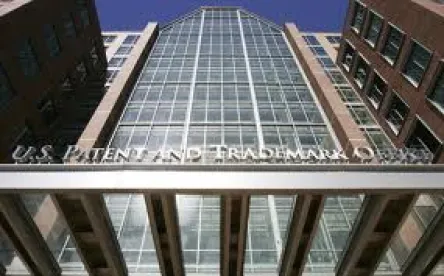The US Court of Appeals for the Federal Circuit affirmed a decision granting summary judgment in favor of the US Patent & Trademark Office (PTO) regarding the propriety of imposing a restriction requirement on a pre-General Agreement on Tariffs and Trade (GATT) patent. Hyatt v. PTO, Case No. 2021-2324 (Fed. Cir. Sept. 8, 2022) (Moore, Prost, and Hughes, JJ.)
This action arose from the prosecution of a pre-GATT application that claimed priority to applications filed as early as 1983. The issue stems from changes to US patent law limiting patent terms to 20 years from their filing date. The old law provided a grant that lasted 17 years from a patent issuance. As the Federal Circuit noted in early litigation involving Gilbert Hyatt, tying patent term to the grant date “incentivized certain patentees to delay prosecuting their patents by abandoning applications and filing continuing applications in their place.” But the change in law left a gap for so-called transitional applications—those filed but not yet granted before the new law took effect. This “‘triggered a patent application gold rush in the spring of 1995’ by applicants who wanted their patent claims to be governed under the [old law] … This gold rush is ‘often referred to as the ‘GATT Bubble.’’”
Hyatt, a prolific inventor, is named in a series of pre-GATT applications filed in 1995 during the GATT bubble. Since then, he has continued to prosecute these applications. As a result of various litigations, the PTO stayed the prosecution of many of these applications between 2003 and 2012. In 2013, over Hyatt’s objections, the PTO required him to select eight claims from an application containing 200 for prosecution. In 2015, the PTO issued a non-final rejection on said claims. Hyatt responded by essentially rewriting the claims in their entirety. The examiner then issued a restriction requirement between the original and amended claims, which would require Hyatt to submit a new application with the new claims, which would be subject to the new law. The restriction requirement was based on the “applicant-action exception,” which allowed the PTO to issue a restriction requirement when the examiner could not have previously made one because of the actions of the applicant. The authority for the PTO action was rooted in Rule 129 (b)(1) (ii), which in relevant part provides:
(1) In an application … that has been pending for at least three years as of June 8, 1995 … no requirement for restriction . . . shall be made or maintained in the application after June 8, 1995, except where:
(ii) The examiner has not made a requirement for restriction in the present or parent application prior to April 8, 1995, due to actions by the applicant
After the PTO issued a restriction requirement, Hyatt filed an action in the US District Court for the Eastern District of Virginia, alleging that the PTO violated the Administrative Procedure Act because the restriction requirement was arbitrary, capricious, an abuse of discretion or otherwise not in accordance with the law. Hyatt argued that the restriction requirements were generally not permitted on GATT bubble applications and that the applicant-action exemption should not apply. The district court ruled in favor of the PTO. Hyatt appealed.
At the Federal Circuit, Hyatt raised two arguments. First, he argued that Rule 129(b) only permitted restrictions on GATT bubble applications based on the actions of the applicant, and as he took no action, the exception did not apply. The Federal Circuit rebuffed this argument on the basis that inaction by an applicant (i.e., not disclosing the newly disclosed species altering invention at the time of filing) was an “action” that permitted a restriction requirement (since the PTO could not have done so prior to presentation of the new species).
Hyatt also argued that even if, on a purely textual basis, the applicant-action exception did apply, applying it in the present context did not make sense a in the context of the surrounding regulations. The Federal Circuit found this argument similarly unpersuasive, noting that the regulations relied on by Hyatt for context did not relate to restriction requirements at all, and the regulation in issue, as construed by the district court, was consistent with the overall regulatory scheme for the PTO to apply the restriction requirement.
Practice Note: The act of withholding (i.e., not disclosing a separate invention at the time of filing) can be seen as an action by applicant by the PTO.



 />i
/>i
